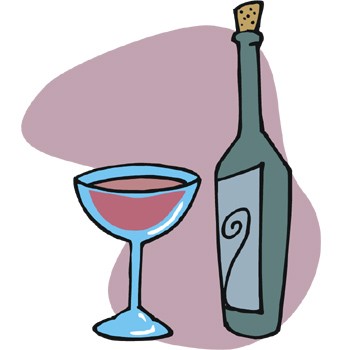John Brown has been a wine and food columnist in West Virginia since the 1980’s. His regular columns appear in the Charleston (WV) Gazette-Mail under the title Vines & Vittles.
How to buy (good) cheap wine
If you could afford to pay $100 or more for a “trophy” wine, wouldn’t you expect that bottle to be memorable? I had a friend who recently plunked down $125 for a bottle of cabernet that, indeed, was memorable, but for the wrong reasons. He described it as “rancid, overbearing and lacking character.”
Since that description could fit a plethora of animate organisms, including cheese, over-the hill rock stars and the entire French Parliament, my friend assured me that he was describing wine.
I suppose the lesson here is that expensive does not always mean quality when it comes to buying wine -which is why I always do a little research (usually online) before I spend more than $20 for a bottle.
Conversely, inexpensive wines are not always inferior. As a matter of fact, in my never-ending quest for excellent wine at bargain prices, I am often pleasantly surprised by the quality of wines I did not expect to be very good.
The point here is that often our expectations are colored by the price of wine.
If the price is under, say, $10 a bottle, we do not anticipate wine Nirvana, but we’re hopeful that we’ll find a good-tasting wine to accompany the comfort food we enjoy on a daily basis. In other words, we want a god quaff to accompany our meatloaf or macaroni and cheese.
On the other hand, if the bottle price exceeds $20 or $30, most of us expect the wine to be from good to exceptional so we can pair it with a “Saturday night” meal, such as fillet mignon or Chilean Sea Bass.
Even though we should know better (i.e., that predicting wine quality based on price can be a costly mistake), most of us fall into that trap. Even WineBoy! However, since I do not often spend $30 or more for a bottle, my wine price stereotyping errors are usually on the other end of the spectrum -- but they’re probably just as costly.
For example, I spend hundreds of dollars a year on lower-priced wines looking for that little gem I can tell you about. What I sometimes discover, however, is that bargain wine (i.e., “Carlo’s Red” at $2.99 a fifth) is a better accompaniment to four-day old road kill than to the beans and weenies meal I had hoped to match it with.
Yet, for every ordinary to awful inexpensive wine, there are two or three good to exceptional ones just waiting for you to discover. Today, I’ll give you a tip or three on how to increase your chances of finding that quality wine bargain without suffering through a sea of wine mediocrity.
Tip number 1: When looking for a good “jug” wine or inexpensive regular bottle, pick the wine by the varietal. Varietals are ones which list the grape variety (i.e. cabernet sauvignon or zinfandel) on the label. Given the choice of a wine labeled as “Red” or “White,” or one described as chardonnay or merlot (for example), choose the one with the grape name.
Tip number 2: Look for wines with a vintage date to insure freshness. More than any other means, picking jug wines with a recent vintage date is a reasonable way to insure that the wine has not gone “over the hill.” In less expensive wines, most wineries concentrate on trying to make products that exhibit good fruit and freshness. Unfortunately, these are the components that go first as most inexpensive wines age. This is particularly important in picking a white wine which is even more prone to losing fruit and freshness as it gets older. My general rule (and remember, there are always exceptions) is to pick lower-priced whites with vintage dates no older than two years. With most inexpensive reds, vintage dates should be no older than four years.
Tip number 3: Choose wines that are from more specific growing areas rather than those labeled as being produced from grapes grown in larger regions. For example, a 2006 chardonnay from Sonoma County is preferable to a 2006 chardonnay from California. This is a very important way of determining the quality of a lower-priced wine. When the specific appellation of origin of the wine is displayed on the label, you can usually count on the product being good.
Some wine shops make it easier than others to find inexpensive wines, and some actually taste them before putting them on the shelf. The Wine Shop at Capitol Market in Charleston is a good place to find inexpensive wines and knowledgeable wine sales people. These folks actually have a whole rack of wines that are priced at $12 a bottle or under, and they can usually describe the wine’s taste characteristics.
Look for a couple of bargain wines I'll recommend in this space over the next few days.

